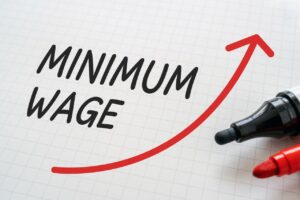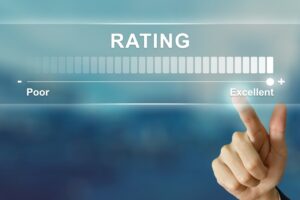Challenges with high-interest rate credit card debt can easily overwhelm your budget. As your balances increase, so do your minimum payment requirements. The result is a situation where you’re living paycheque-to-paycheque and are forced to rely on credit cards to cover every emergency. It’s a downward spiral and you will likely need some form of debt relief to recover. If you think you can pay your creditors on your own, one of the below DIY debt relief tactics can be your best bet.
What is debt relief?
Debt relief is a catchall term that refers to any solution that makes it easier for a borrower to get out of debt. When you can’t get out of debt with traditional monthly payments, you use a debt relief option to make it easier to achieve your goal. Some debt relief options are do-it-yourself, while others require professional support. These are known as debt relief services.
DIY Debt Relief Options
With do-it-yourself debt relief options, the goal is always the same. You want to lower the interest rate applied to your debt so it’s easier to pay off. Credit cards are known for having high APR. This, combined with low minimum payment requirements, makes it difficult to pay down your balances.
By lowering the interest rate, you can focus on repaying the principal (the real balance that you owe). This allows you to pay off the debt faster, even though in many cases you may pay less each month.
Interest Rate Negotiation
With this DIY debt relief solution, you simply call each of your creditors to negotiate lower interest rates on your credit cards. If you’ve been a good, long-time customer and your account has remained in good standing, the creditor may be willing to offer you a lower rate.
Results with this method can vary. Some creditors may be willing to negotiate, while others may not. Some may only agree to lower your rate temporarily or may require you to freeze and close the account once it’s paid off.
What’s more, you are unlikely to have success with this option if your account is delinquent or you’ve missed payments in the past.
Debt Consolidation
A debt consolidation loan is a low-interest rate personal loan that you take out and then use the funds to pay off other high-interest rate debts. It’s an unsecured personal loan, so you will need a good credit score to qualify at the lowest interest rate possible.
Line of Credit
This is similar to a debt consolidation loan, except it’s an open credit line. Instead of receiving a one-time lump-sum of cash, you qualify for an open credit line with your bank or credit union. You can use some or all of that line to pay off other high-interest rate debts. This option also requires a strong credit score to qualify.
Mortgage Refinancing
If you are a homeowner and you have equity available in your home. You may choose to refinance your mortgage and take out some of that equity. Equity is the value of your home minus the remaining balance owed on the mortgage. You can generally borrow up to 80% of the equity that you have available.
This option allows you to get a lower interest rate because it’s a secured loan. Your home serves as the collateral. Keep in mind that this will increase the balance owed on your mortgage, which means your monthly payments may increase as well. You will also pay fees to refinance, including getting an appraisal to assess the home’s current value.
Borrowing Against Home Equity
With refinancing, you replace your existing mortgage with a new mortgage. However, there are other borrowing options, such as Home Equity Lines of Credit (HELOCs) and home equity loans which take out a “second mortgage” against your home. In other words, you take out an additional lien against your home.
These options have a slightly higher APR than refinancing, although lower than unsecured options. However, that can significantly increase your risk of default and foreclosure. Be very careful when using options like these to borrow against your home, particularly if you are facing financial challenges and living paycheque-to-paycheque.
Debt relief services
Although most people would prefer to solve financial challenges on their own, some situations simply require professional help. Debt relief services provide this type of support. You hire someone to work with or negotiate with your creditors on your behalf.
This can be a nonprofit organization, such as a credit counselling agency, a private company, such as a debt settlement firm, or a Licensed Insolvency Trustee, who helps you arrange a consumer proposal or file for bankruptcy. The following are not DIY debt relief options, though you may have to resort to one of them.
Credit Counselling
Nonprofit credit counselling services exist to help consumers set up affordable repayment plans with their creditors, also known as debt management plans (DMPs). The credit counsellors work with the credit card companies to reduce or eliminate interest charges applied to your balances.
You still owe your original creditors, but you make one monthly payment to the counselling organization. They distribute the payment each month to your creditors as agreed. You complete repayment in 60 payments or less. The plan will be noted in your credit report for two years from the date you complete the program.
Orderly Payment of Debt
OPD is a government program that’s only available in Alberta, Nova Scotia, Saskatchewan, and PEI. This also consolidates your debt into one monthly payment that you set up through an OPD agency. The interest rate is set at 5%.
This program also repays everything you owe in 60 payments or less. It will be noted in your credit report for three years from the date you complete the program.
Debt Settlement
Debt settlement is a program that you set up through a private company. The company collects funds to negotiate settlements with your creditors on your behalf. This means you only pay back a percentage of each amount you owe. You pay the settlement company a percentage of each debt settled as their fee.
This solution can be extremely tough on your credit. Any missed payments will be noted in your credit history and the accounts will be noted as settled for six years from the date the balances are discharged. Also, the results can vary. Many creditors will not negotiate with a private settlement firm. Instead, they will expect you to go through a Licensed Insolvency Trustee (LIT) to have your balances discharged.
Consumer Proposal
A consumer proposal is like a debt settlement because you only repay a portion of what you owe to each creditor. However, that portion is set by a Licensed Insolvency Trustee, who reviews your finances to determine what you can reasonably afford to repay within five years.
Once the Trustee determines how much you will pay, you and your creditors agree to the plan in a legally binding agreement. This relief option will be noted on your credit report for three years from the date you complete the proposal. Also, be aware that the fees can be high.
Bankruptcy
When the Licensed Insolvency Trustee reviews your finances, they may rule that you are insolvent and must file for bankruptcy. Being insolvent means that you are so overextended with debt that you cannot reasonably afford to repay what you owe.
In this case, the Trustee will take control of your assets and any assets that do not qualify for an exemption where you live will be sold. The proceeds pay off your creditors, then the remaining balances on your debt will be discharged.
Bankruptcy remains on your credit report for six years from the date your balances are discharged. It will also become a permanent public record. Bankruptcy should not be entered into lightly, but in some cases, it is simply the last resort a consumer has to get out of a bad situation with debt.
DIY debt relief sometimes appears to be an unattainable goal for those who need help the most. If this is an option you’re willing to explore, a member of our team may be able to help you begin. Talk to a credit counsellor today start chipping away at your debt today.
Are you interested in taking on your debt load? See how a counsellor can help!





